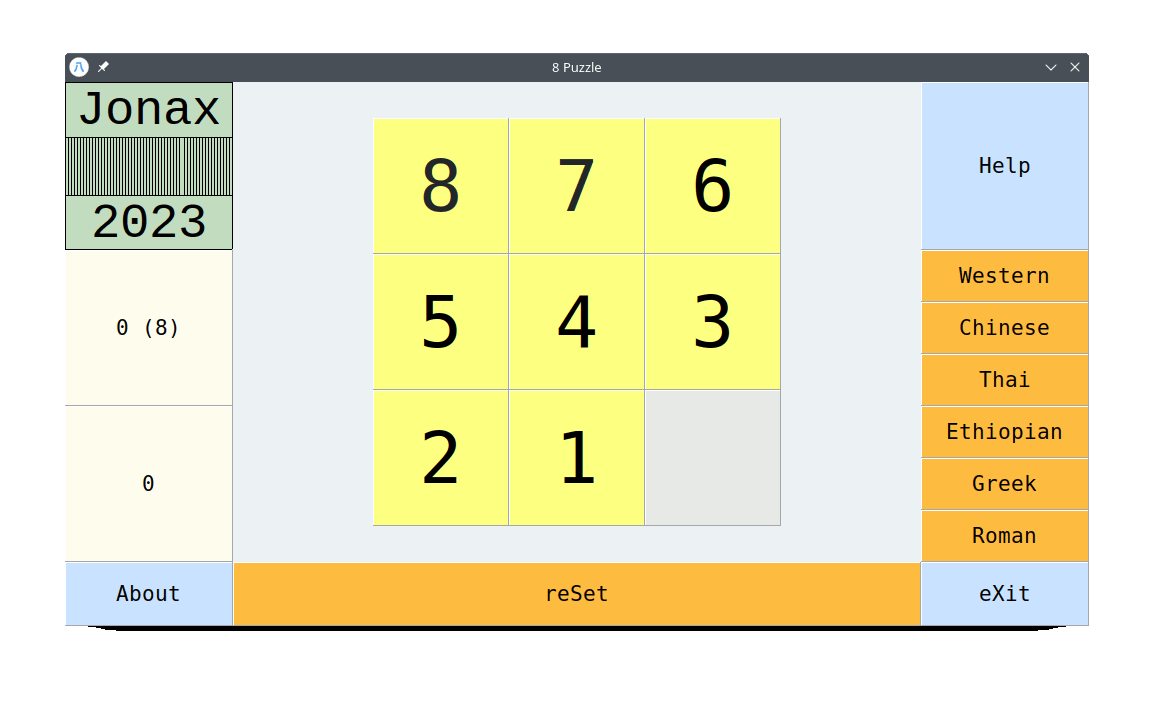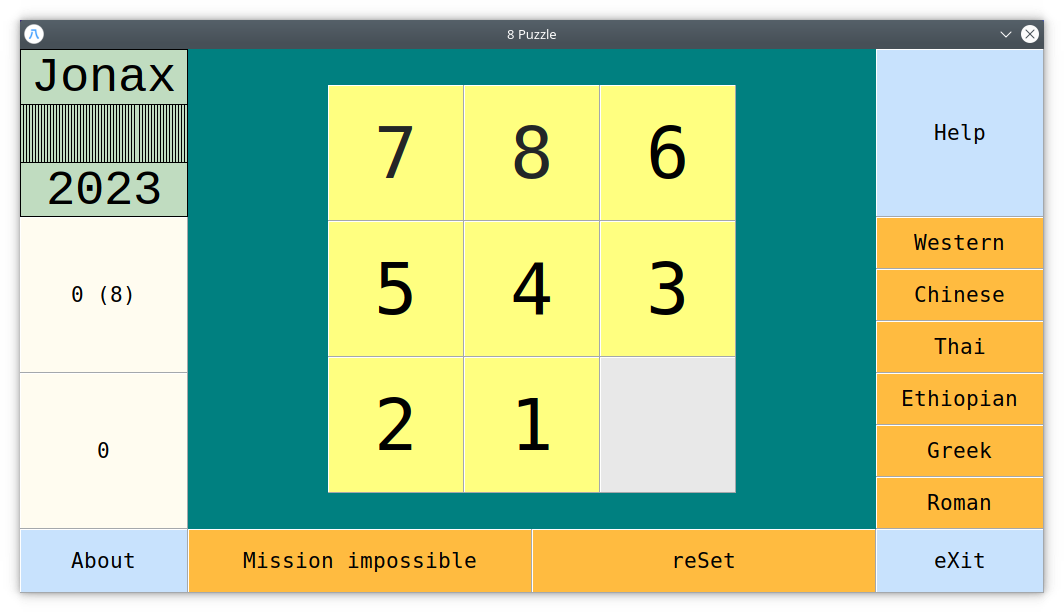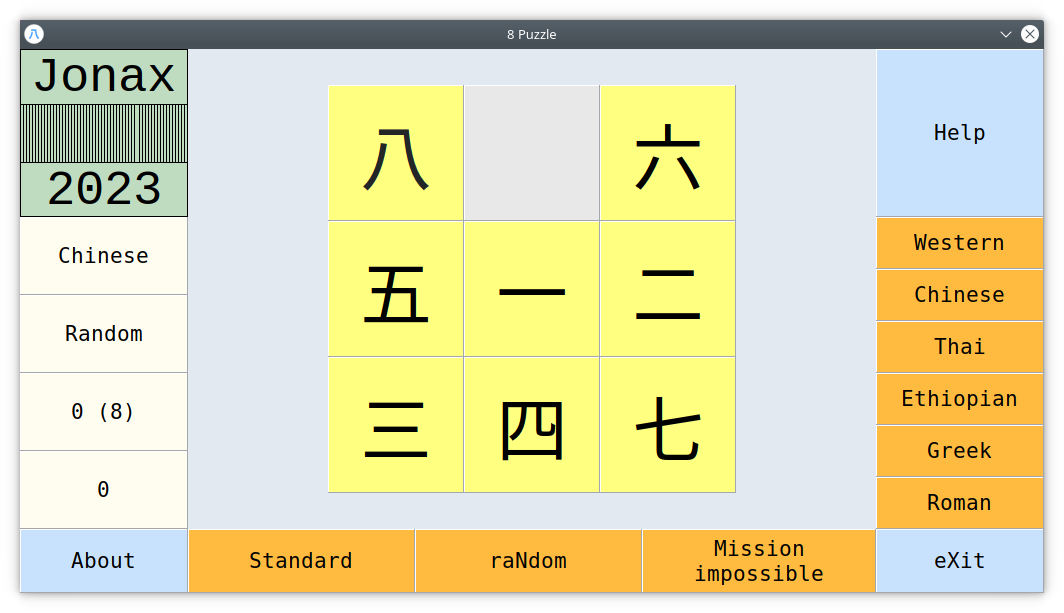Fellow pascal game developers!
I'm pleased to give a pre-view of yet a Linux game. Again it's from an old and tested concept with my own touch added.
The 8 puzzle. The smaller cousin of the more famous 15 puzzle. The added touch is the non international standard number systems.
( Unfortunately I don't speak either of Chinese, Thai, Ethiopian or Greek languages so I had to rely on internet search for getting those numerals. )
As usual the file is incredibly small and system requirements modest. In this case there's not even a timer function involved. Pure logic.
The game/puzzle runs well in virtual linux machines.
Hopefully the program behaves well on HighDPI settings.
There is probably more polishing to do, depending on feedback, but the game is fully playable already.
One missing point is the start position. Now always the same. Randomized start values is on the to do list. However it's not as simple as just placing the tiles at random. From what I read not all combinations are solvable.
I can also mention the puzzle may appear in some form in some future adventure style game..
Anyway.. enjoy the 8 puzzzle.. feedback is always welcome
https://www.jonax.se/linux/8puzzle.php






 Reply With Quote
Reply With Quote


 . I guess SVG is an option but I have no experience there.
. I guess SVG is an option but I have no experience there.

 None of them managed to solve it
None of them managed to solve it 



Bookmarks